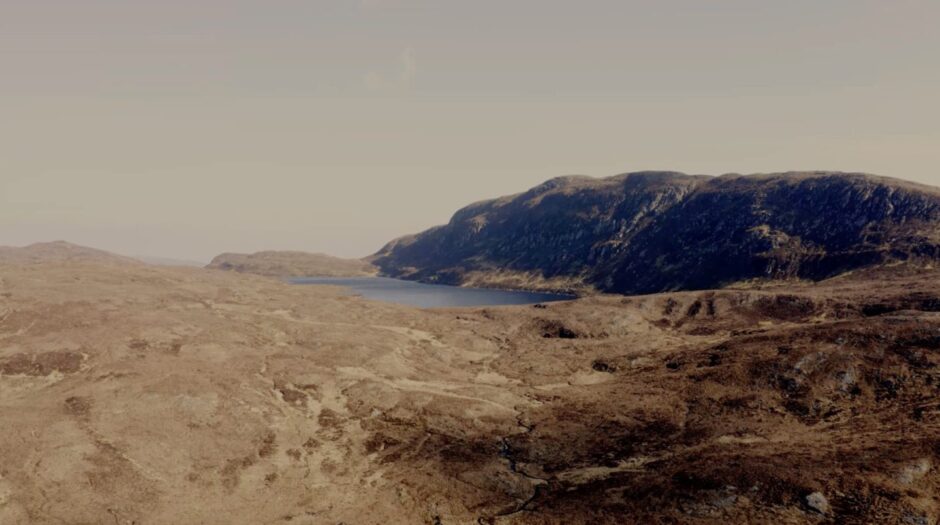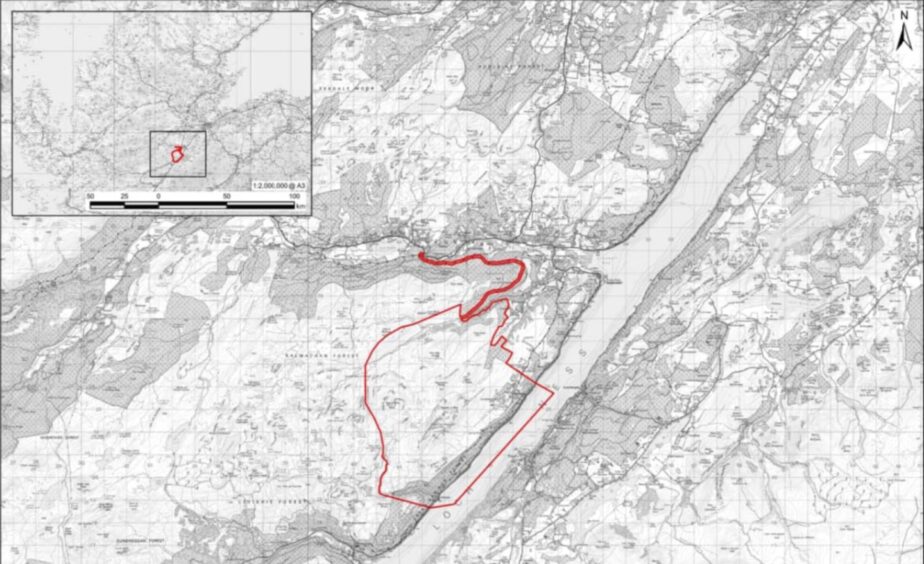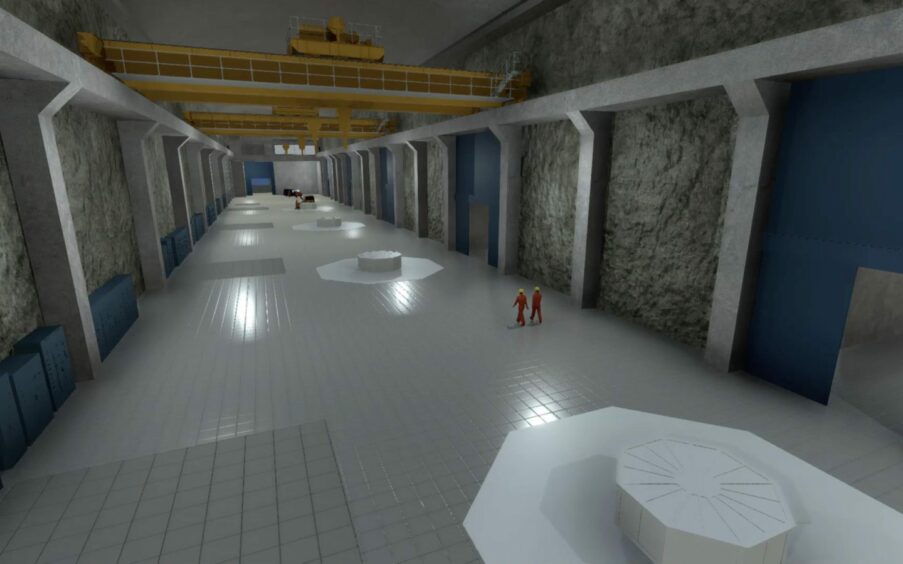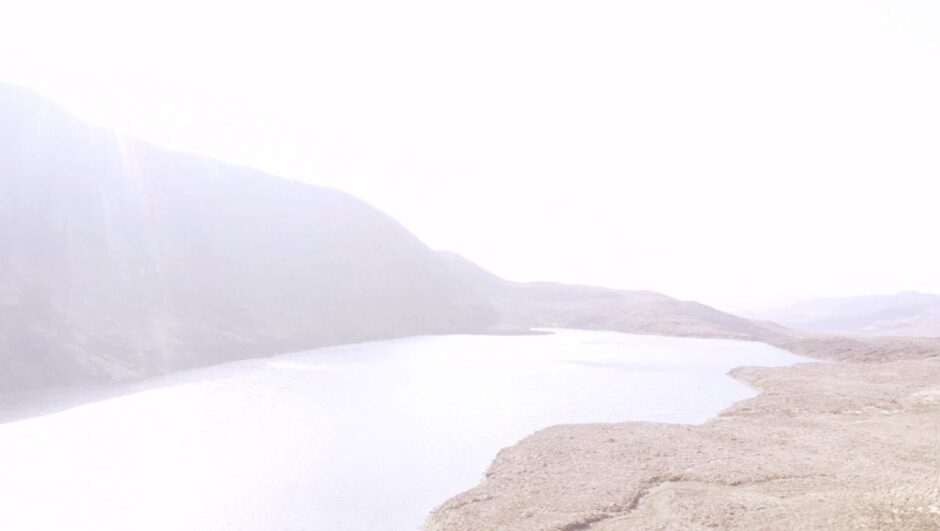
The largest pumped storage hydro project planned in the UK could “realistically” be up and running by 2032 – or sooner, if a new government elected in July opts to move faster to meet net zero targets.
The Glen Earrach pumped storage hydro (PSH) project is one of five major schemes being planned around Loch Ness, the UK’s largest body of water by volume.
Glen Earrach, which is Gaelic for “Valley of Spring” is being led by the family owners of the Balmacaan Estate, which is around six miles south of Drumnadrochit.
Power on the loch
Roderick MacLeod, 47, is the director of Glen Earrach Energy (GEE). He met with Energy Voice at the estate ahead of the first in a series of community consultations.
Already concerns have been raised about the cumulative effects of the proposed schemes in the area.
There are existing hydro schemes nearby Loch Ness, Glendoe, near Fort Augustus, and Foyers.
The front runner is SSE’s Coire Glas, a 1.5GW scheme on nearby Loch Lochy. This achieved consent in 2020 and is awaiting a final investment decision (FID) this year.
Other projects include the Gilkes Energy Fearna 1.8GW scheme on Loch Quoich. Like Glen Earrach, developers have submitted an initial scoping report to the Scottish Government’s Energy Consents Unit.
Statkraft acquired the consented Loch na Cathrach (formerly known as Red John) PSH scheme from Intelligent Land Investments Group (ILI) in December 2023.
Another is Statera Energy’s Lock Kemp Storage 600MW project.
In an early salvo against the developments, Ness District Salmon Fishery Board has called for a moratorium on further pumped storage hydro schemes.
MacLeod addressed concerns that water levels will be affected and says the schemes could be used to deliver better ecological outcomes for the area’s complex water system.
He said the loch functioned more like a river, with water flowing in and out of the basin.
He said: “There’s a lot of inertia in the Loch Ness basin. Meaning that it is almost self regulating – you pump water out, you put water, in but the effect on the level is much less than what it might be if Loch Ness was a closed bowl.”
The amount of water coming out and going into the loch from the PSH schemes could be “very finely managed” and even improve on the water body’s seasonal ebbs and flows, he added.
“It can be improved a lot by co-ordinating the different hydro schemes around Loch Ness.
“We have the science these days and we know when it is better for the flow to be slightly accelerated perhaps and when it is better to be slowed down.
“For example, the salmon and the trout need a slightly faster flow in the spring. But then in the summer you want to slow the flow down because you want to save as much water as possible and then in the wintertime it is a mix because you want to stop floods but you want to get the water out.”
Meeting need for storage
Partly raised in Lausanne, MacLeod trained as a systems engineer at the prestigious Massachusetts Institute of Technology in Boston. This took him through a varied career including the Royal Navy, telecommunications, banking and marine navigation until he returned to the family business on the estate.
His father, a Scot living in Switzerland, bought the 2o acres of Balmacaan Estate 30 years ago.
It was mainly used for recreation and forestry, including regenerative planting. Then one day in 2009, SSE approached the MacLeods with research which indicated the area was “one of the best sites in the UK” for large scale PSH.
The family decided it was time to act just a few years ago as the need for storage to support offshore wind and other intermittent renewables became clearer.
MacLeod cites modelling by its advisors Frontier Economics and LCP-Delta, which show that the UK could really use 20GW of PSH. Currently plans are only set to meet half of this need.
The Glen Earrach scheme will stretch 500m from below Loch Ness up to the “headpond”, a body of water called Loch nam Breac Dearga above.
The firm hails it as as the “most efficient of its type” in the UK due to its topography, scale, and location.
Construction would take up to six years to complete once enabling and ground investigation work was completed, which could take around two years.
The scoping report estimates 1,000 people will be employed on site during the construction phase at its peak. Most of the construction workforce could be sourced from Inverness and the surrounding communities. However, some construction activities will require specialist skills, which may be brought in from other parts of UK, Europe or worldwide. These could be housed in temporary housing and cabins.
The facility won’t be a major employer once it is up and running. The firm expects there will be up to 20 permanent on site jobs created as a result of the operation. Further employment could be created if a visitor centre or similar is considered viable, such as is popular at Cruachan.
Just outside the proposed entrance to main power cavern is an old farm house, which MacLeod says will be refurbished for use by staff.
Expertise
Glen Earrach has enlisted Alpiq, the Swiss utility, which has developed the Nant de Drance PSH in Valais canton, Switzerland.
The last PSH scheme built in the UK was 40 years ago and the Swiss are currently at the forefront of building vast hydro schemes that also keep visual impact to a minimum. It is an approach MacLeod is keen to replicate.
The only visible parts to the Loch Ness scheme will be three entrances, a dam at the top (which will be built using rock excavated from the tunnel) and a switchyard.
“That is the whole point about why we wanted to lead the project in its initial phases ourselves, to make sure it is designed to have the minimum landscape impact,” said MacLeod.
For example, the switchyard will be not be the more typical air insulated switchyard (AIS), “filled with dalek-like electrical monsters”.
“We don’t want that,” he said. “The alternative to that is a gas insulated switch yard which can be put inside a barn. And that can be hidden, it can be landscaped or painted green. That is the only thing we are expecting in terms of any significant above-ground infrastructure.”
He also highlights how the project will also involve significant improvements in the land including peat restoration, wetlands, tree planting and riparian (river basin) works.
“The project is committed to putting a lot of resources to work in all those types of environmental mitigation works, which really are trying to shore up the environment for climate change,” he said.
The first engagement Friday will also open the conversation on what the locals would like to see in terms of a community benefit fund so that it “really does respond to the needs of the community”.
“The world works because there are people here who know what they need and they know what their problems are with the environment – they are here every day. A big project like this should be here to help.”
He’s positive about government’s proposed approach to supporting the the sector.
“They are trying to get the projects funded completely by private funding. I think it will happen, especially if they design the cap and floor that allows debt funding to be unlocked.
“The projects are self financing and actually never draw on the floor because the government has backed the right projects. And all it has done is provided the floor that says to the banks no matter what happens you’re going to get paid back.”
The danger of major PSH projects is cost overrun, but MacLeod is confident his team is putting sufficient research into the site geology in particular to reduce this risk.
Speaking just hours before Prime Minister Rishi Sunak called a general election in July, he was keen to see the Conservatives maintain net zero targets for 2035 and was even more keen on Labour’s ambitious proposals to decarbonise the UK energy system even earlier by 2030.
He believes there is a “strong silent majority” of UK citizens that back strict net zero carbon targets. And the Labour target of 2030 would be “quite smart”.
“If everything goes to plan this project could be delivered in 2032. That’s realistic. If you move into a hell bent for leather scenario where people are saying, actually, we really need to deliver it could be delivered sooner.”

 © Supplied by Glen Earrach Energy
© Supplied by Glen Earrach Energy © Supplied by SSE
© Supplied by SSE © Supplied by Glen Earrach Energy
© Supplied by Glen Earrach Energy